Three Days Sacred Valley Peru. It was a long overnight flight (3 segments from ORD-SAL-LIM-CUZ) with little sleep. I was excited for my trip to explore the Sacred Valley, Machu Picchu, and Cusco. I was starting my trip with three nights in Ollantaytambo. While I was planning on spending three nights in Cusco, I decided to begin my trip in Ollantaytambo since it is 600 meters lower than Cusco. This gave me a couple of days to acclimate before Machu Picchu and Cusco. I was to spend the next two weeks at higher altitudes, from 2,000 to 4,000 plus meters and this would take a slight toll on me. The Sacred Valley of the Incas also known as the Urubamba Valley is located in the Andes Mountains and is overflowing with historical Inca ruins.

Day One
I arrived at the Cusco airport. It was chilly morning and the higher elevation was felt immediately. I puffed as I walked up the ramp to retrieve my luggage. I had arranged a taxi to drive me to my hotel in Ollantaytambo. This was a 2 hour ride and $37. I would recommend taxidatum which I booked online.
Sauce Hostel was located centrally in the quaint and compact Ollantaytambo, just steps away from the main plaza and a short walk to the Ollantaytambo ruins. I checked in and took a quick nap.
Feeling refreshed, I made my way under the high altitude sun to El Albergue Hotel to partake in a Pachamanca lunch. Pachamanca? Pachamanca translates to “earth oven” in the Quechua language, which is the indigenous language spoken by approximately by 10 million people in the Andes Mountains. This is a traditional Incan meal cooked upon hot rocks in a shallow pit. I relaxed at a picnic table lazily gorging on local fare at this organic farm. This was a relaxing way to ease into five weeks of exploration in South America. Read more about my awesome meal.
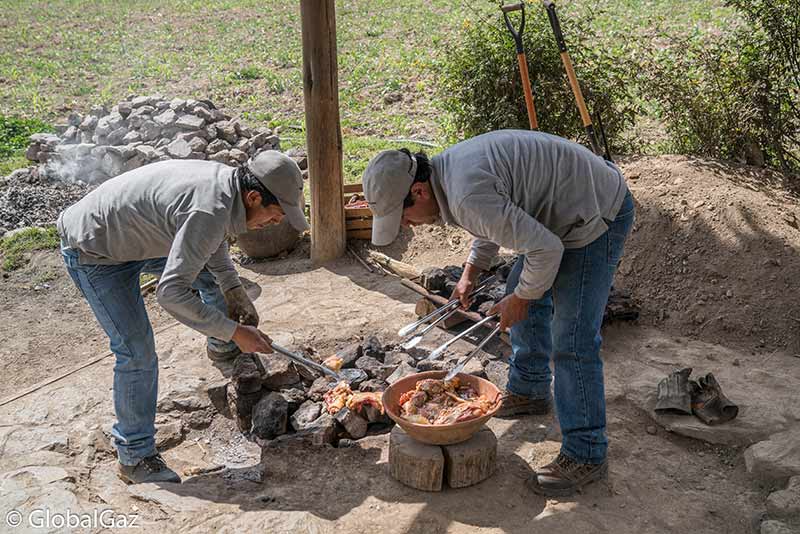
Day Two
Ollantaytambo
Only a ten minute walk from the Sauce Hostel is the main historic site in town, the Ruins of Ollantaytambo. Ollantaytambo, a village of 10,000 people, is set amongst mountains with sizable Incan ruins located on two of them.
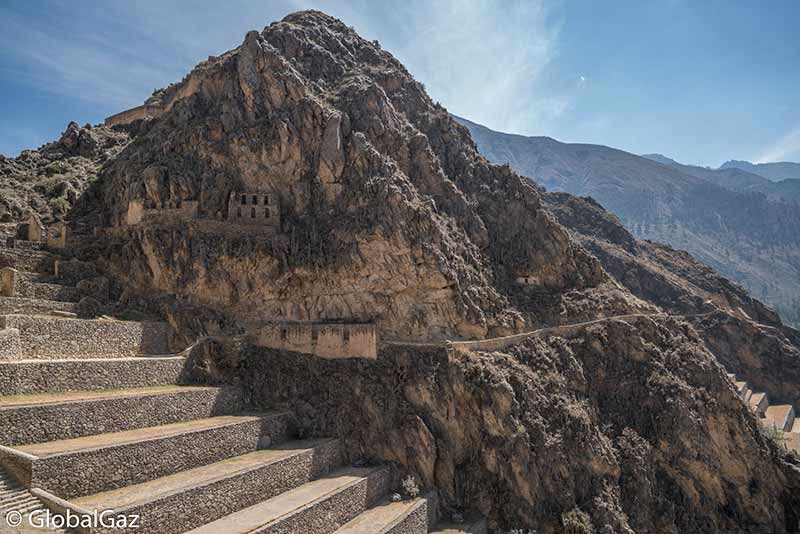
In the mid-15th century, Incan emperor Pachacuti incorporated Ollantaytambo into his empire and began a construction renaissance of extensive terracing and irrigation in the Urubamba Valley. In the 16th century, the Spaniards attacked Ollantaytambo, but it was successfully defended by the Incans as they fought from the fortified structure and flooded the plains. The Spanish eventually returned and captured this Incan strongpoint.
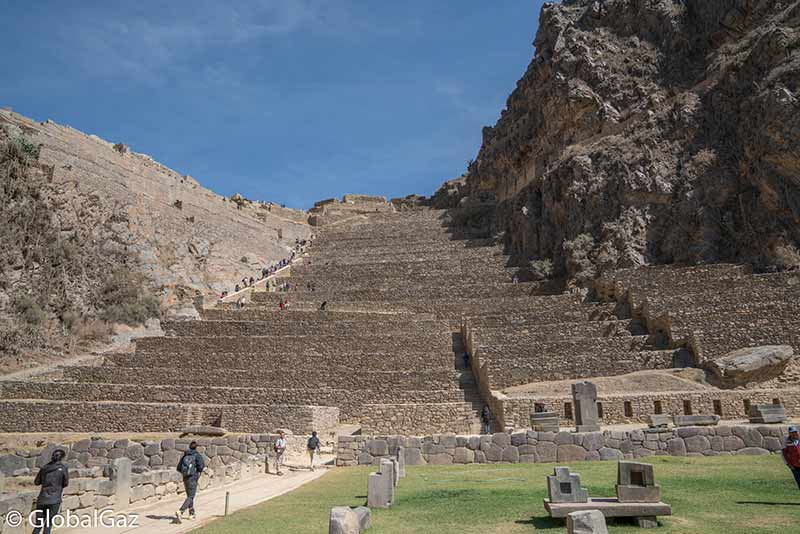
Three Days Sacred Valley Peru
I would suggest visiting the ruins in the earlier morning or later afternoon so you can avoid the tourist buses who make day visits. It is easy to be wowed by the impressiveness of this structure in its scale and within this beautiful mountainous setting. Across town on an opposite mountain, you can spy Incan storehouses.
Tickets. You can buy a single entry ticket to Ollantaytambo Ruins or you can buy a Boleto Turístico which comes in several iterations and convers multiple sites (but not Machu Picchu) over different time periods. Take a look at where you will be visiting to figure out which ticket is the best fit.
Birthday Party
Ollantaytambo is a small town with a requisite main plaza found in every town. It is easy to explore the shops, restaurants, and bars with a stop at the local market. Walking five minutes out of the plaza and you are in the locals’ neighborhood. I stumbled up on a festive group sitting in the midday sun in an alley. Within moments, I was celebrating with the local matriarch who was celebrating her 80th birthday. We drank warm beer and I danced with the guest of honor. She was compact, and she vigorously jerked my arms as we danced. The magic of travel.
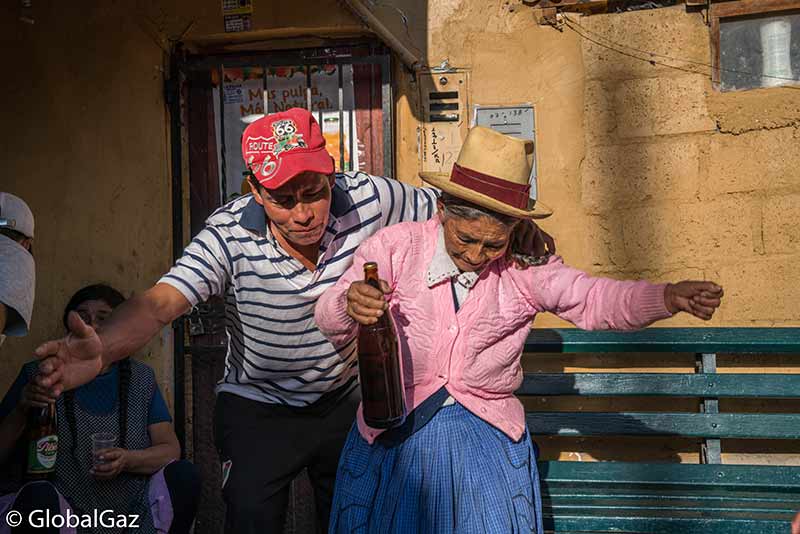

Day Three
I met my new friend Senor Roberto as I walked to my hotel after visiting the Ollantaytambo ruins. Senor Roberto, a taxi driver, held a pamphlet of the Sacred Valley sites. Following a brief negotiation, we settled on a price of 160 Peruvian Soles (approximately $50) to visit three sites the next day.
Chinchero
Chinchero is an amalgam of Inca and Spanish history. Adjacent to an Inca Ruin is a Spanish colonial church. The church is a beautiful white adobe bricks with an adjacent bell tower, placed on the foundation of Inca ruins. In the plaza are dozens of locals hawking local handicrafts, but it is best to visit on a Sunday when they are in full force. Near the church are terraced Inca Ruins. Also, note, Chinchero is over 12,000 feet high.

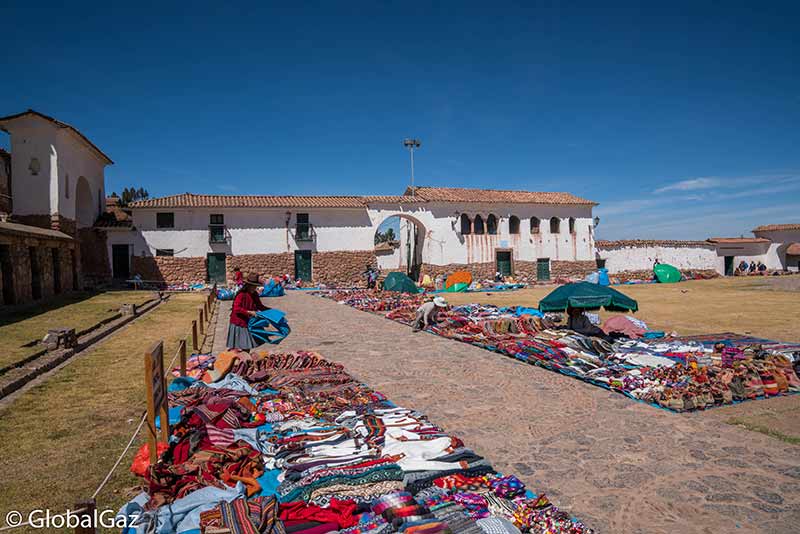
Salinas de Maras
We curled down the winding road and I peered over the edge to view scores and scores of terraced salt mine ponds in a multitude of shades of white. These ponds sit in a valley between two high mountains. The salt mines date back over 800 years with families working here dating back generations. Salty water is channeled over hundreds of polygons. Water evaporates from the sun and the salt is birthed. Members of the community farm the salt ponds in this communal society. As a visitor, you can view the salt ponds from multiple viewing points, buy gift packets of salt, and cool off with an ice cream on the walk down to the terraces. A visit to the salt mines is visual eye candy.
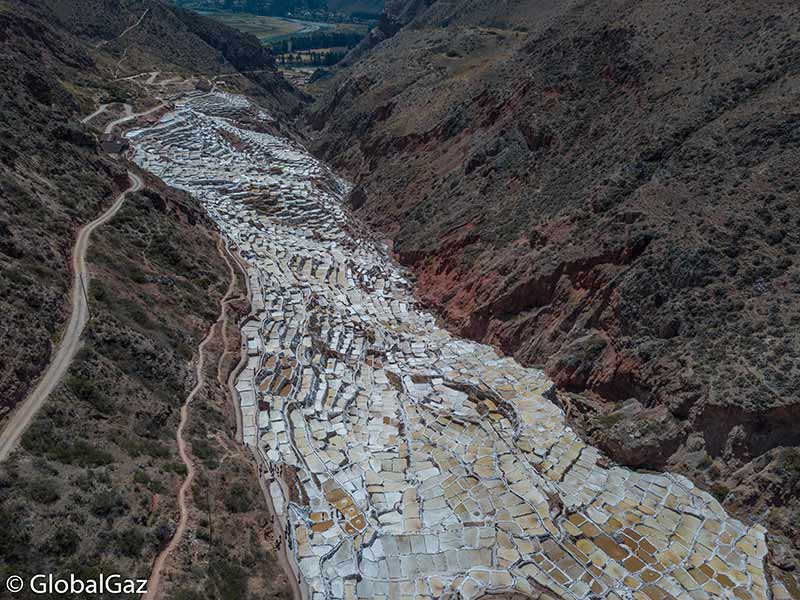
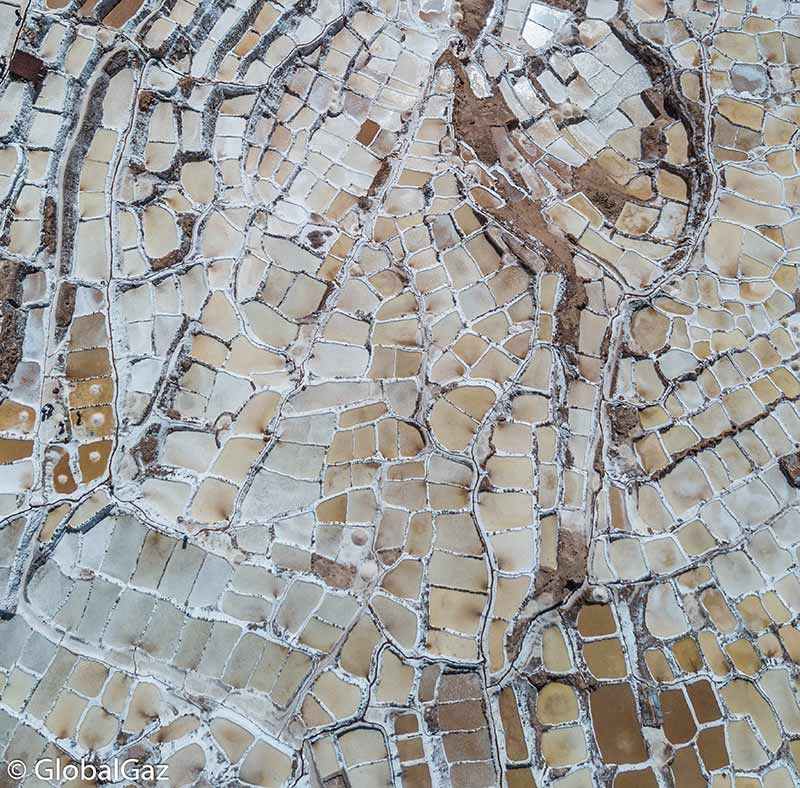
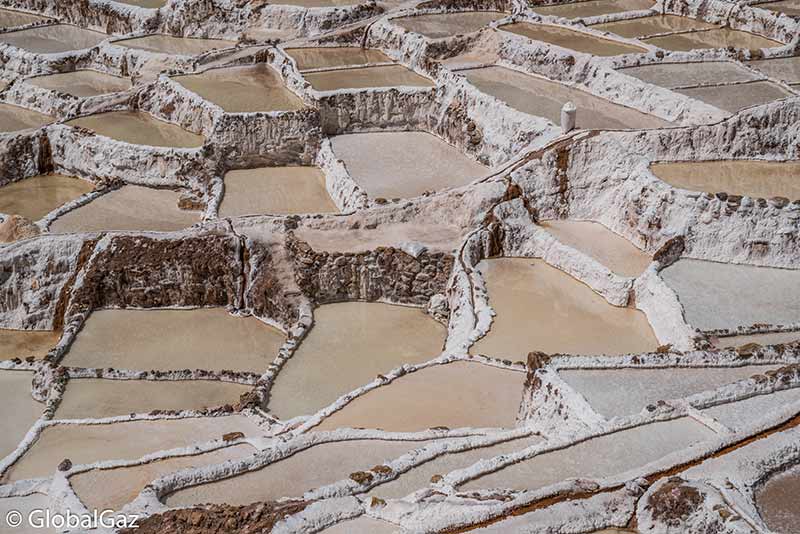
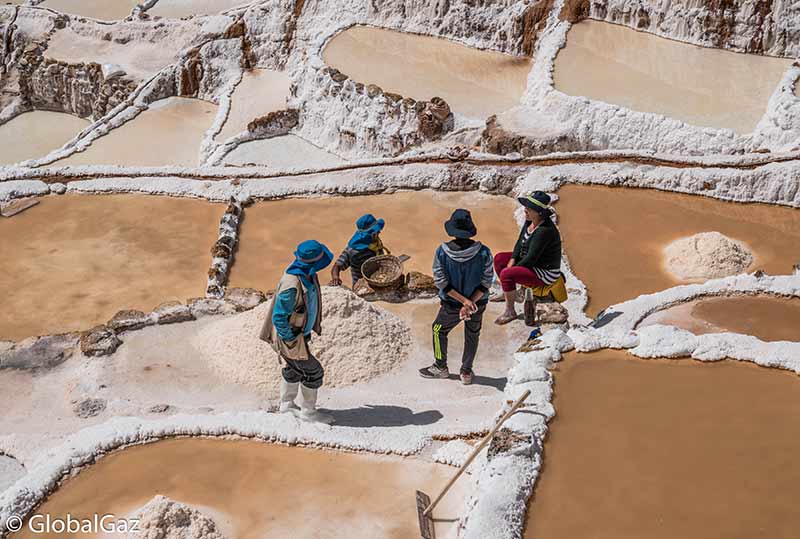
Moray
Did aliens mysteriously visit southern Peru centuries ago? If they did, the evidence are two giant terraced circular rings on a high plateau comprised of stone and compact earth. If it wasn’t aliens, there is a good chance it was the Incans. One of the depressions is over 30 meters (100 feet) deep and 220 meters (722 feet) wide. The purpose of these depressions is unknown, but one theory is this structure was used for Incan agricultural experimentation. There is a 15 °C (27 °F) from top to bottom providing multiple micro climates to test different crops.
Unfortunately, during my visit I learned the Spanish word confiscar. The rings were best viewed from above so I launched my drone to take a photo. As I brought my drone in for a landing; a member of the staff approached me and informed me that he was going to confiscate my drone. Drones were illegal. Alarmed, I beckoned for Roberto to hopefully assist me. When we arrived at Moray I asked Roberto if I could fly my drone at Moray and he said it was allowed. Roberto and the staff member heatedly spoke for several moments. The end result was I kept my drone and we made a quick getaway.
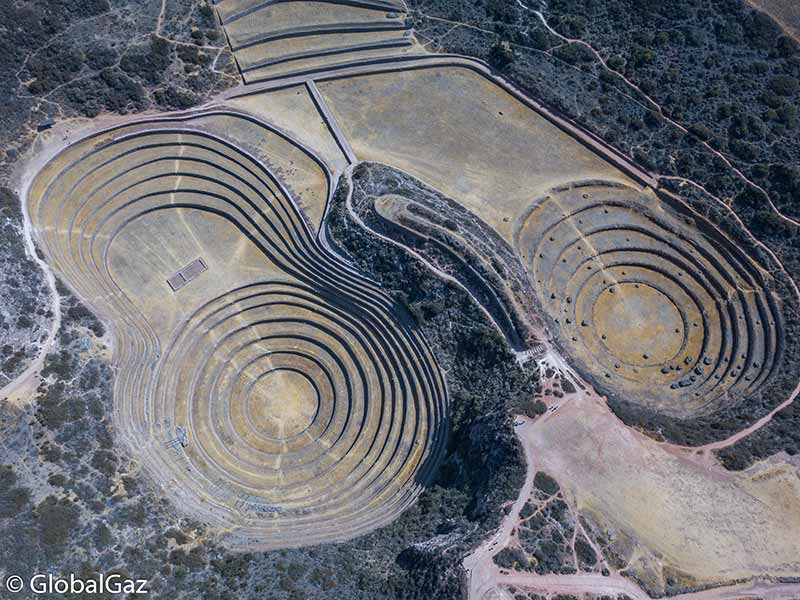

And in case, you want to explore with Roberto.


Where To Stay
There are scores of options to lay your head down at night in Ollantaytambo. I stayed at Sauce Hostal (and PS, this is not a hostel, but more like a boutique hotel) in the center of town, with views of the Inca Ruins from the second floor. This family run eco-hostal was a great option with comfortable rooms in an intimate and relaxing setting. Morning includes a breakfast buffet which includes jams, juices, and fruits from the family’s organic farm. If in Ollantaytambo, consider staying at Sauce Hostal. Read more about my awesome stay at Sauce Hostal.

Where To Eat
Inta Killa
Less than a one minute walk from Sauce Hostal is Inta Killa. Inta Killa was a great option for dinner and grabbing a pizza and salad.
Apu Veronica
Down the street from Sauce Hostal on the way to the Inca Ruin is Apu Veronica. The open-floor restaurant is located on the second floor. I enjoyed the Peruvian food made in the open kitchen with a Pisco Sour.
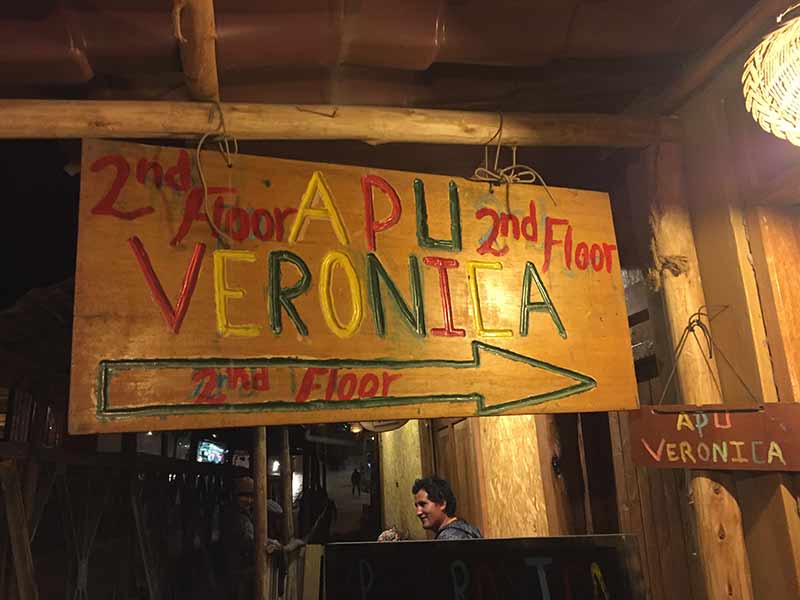
Inka’s Tower
Across the street from Sauce Hostal is Inka’s Tower providing views of the Inca Ruins. Enjoy a drink and watch darkness fall over Ollantaytambo.
Getting There And Away
As I mentioned I took a taxi direct from the Cusco airport with taxidatum. And Ollantaytambo is a great waypoint for Machu Picchu. I took Inca Rail to Machu Picchu (and you can train to Cusco as well).
Disclosure: I was an invited guest at both the Sauce Hostal as well as the lunch at the Pachamanca lunch. The opinion reflected are mine own, and I would highly recommend both.
Three Days Sacred Valley Peru.
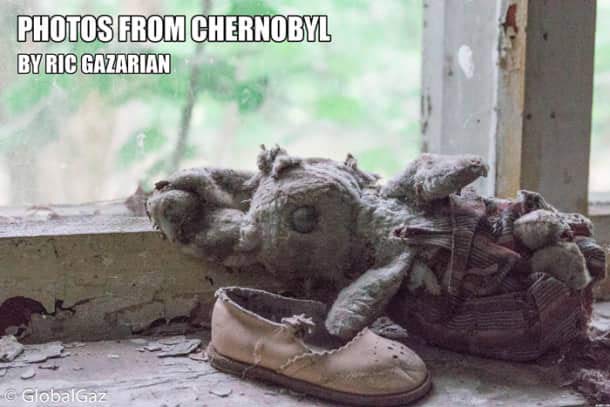
Photos From Chernobyl
Sign up to receive your free copy of Photos From Chernobyl. Over 100 photos from the Chernobyl Exclusion Zone.

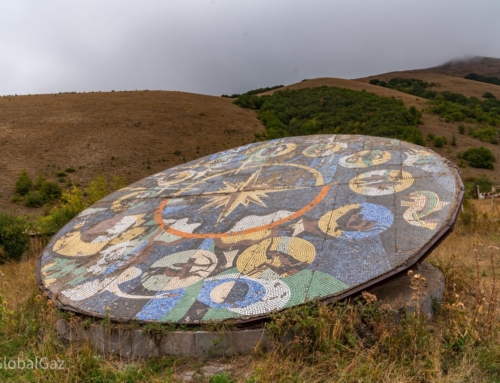
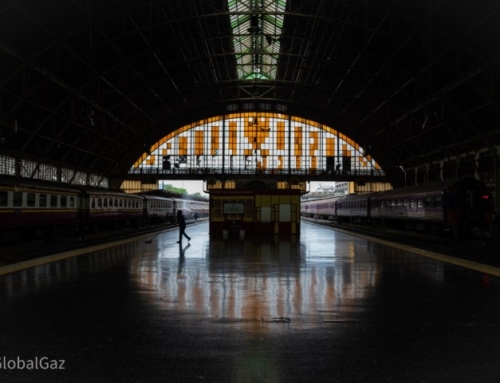
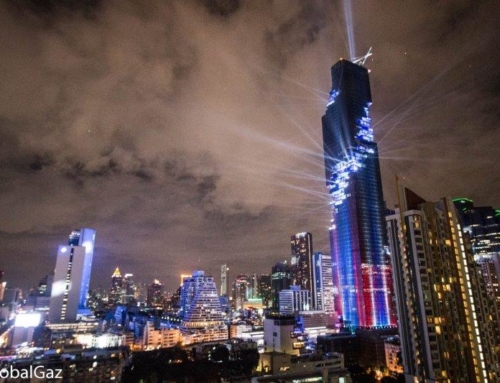
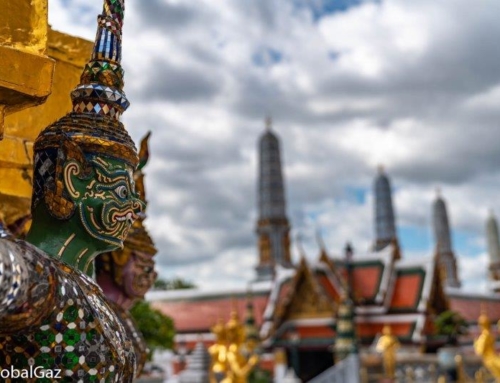
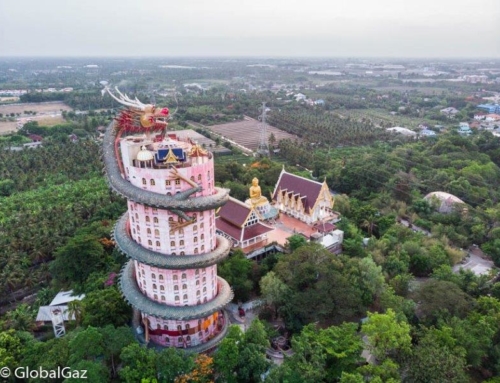
[…] Sauce Hostal Ollantaytambo Sacred Valley. Sauce Hostal is located in the heart of, a quaint village of 10,000 in the Sacred Valley. Ollantaytambo is a great base to explore the valley and also a great midpoint between Machu Picchu and Cusco. In fact, I made Ollantaytambo my home base for three days to explore the area and to get acclimated to the higher elevation of the region (Ollantaytambo is at a lower elevation than Cusco). Check out how I spent my three days in the Sacred Valley. […]
[…] And check out my three days I spent in the Sacred Valley. […]
[…] And check out the amazing hotel I stayed at in Cusco and the three days I spent in the Sacred Valley. […]
It’s illegal to take photos inside of Peru’s cathedrals, but the drone ban is news to me. I’m sure it’s probably due to the locals being afraid that you’ll make professional photographs for sale, thus impacting tourism demand to come to the Sacred Valley. I think it’s great promotion to share these photos with others to inspire them to visit, but we definitely have to be cautious and respectful of the local culture first and foremost. Glad you were able to keep your drone and get away safely.
Saw the signs inside churches. The drone in Peru is not illegal. I declared it at the airport when I arrived at customs. You need to pay a 17% deposit of the value of the drone. You will get the money back when you exit. What got me in trouble, was you are not allowed to fly at national monuments. I did not see the sign, and instead asked my taxi driver if it was ok. He said yes. But neither of us realized it was prohibited.
[…] Gaz and their podcast Counting Countries that you should check out. He has a great article on why the Sacred Valley is a must see and why you should spend extra time there. They are on a mission to interview people who are traveling to all 193 countries in the world and […]
[…] Sauce Hostal Ollantaytambo Sacred Valley. Sauce Hostal is located in the heart of, a quaint village of 10,000 in the Sacred Valley. Ollantaytambo is a great base to explore the valley and also a great midpoint between Machu Picchu and Cusco. In fact, I made Ollantaytambo my home base for three days to explore the area and to get acclimated to the higher elevation of the region (Ollantaytambo is at a lower elevation than Cusco). Check out how I spent my three days in the Sacred Valley. […]